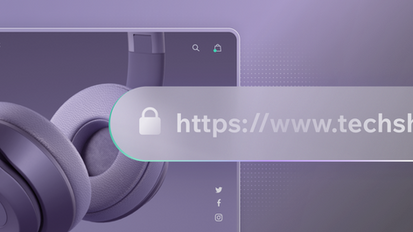Best Web Design Software Trends
The Benefits of Best Web Design Software
Best Web Design Software
Building a website can seem like a daunting task, especially for those who are not familiar with web development. However, by understanding the key details involved in website building, you can create a functional and visually appealing site that effectively communicates your message to your target audience. In this article, we will explore some of the crucial aspects of website building, from choosing a domain name to selecting a hosting provider and designing the layout of your site.

A Beginner’s Guide to Best Web Design Software
Best Web Design Software
Website builders are tools that allow users to create a website without needing to know how to code. They provide pre-designed templates and intuitive drag-and-drop features that make it easy for even the least tech-savvy individuals to create a professional-looking website. With hundreds of website builders available on the market, choosing the best one for your small business can be a daunting task. In this article, we will discuss some of the best website builders for small businesses to help you make an informed decision.
1. Wix
Wix is one of the most popular website builders on the market, and for good reason. It offers a wide range of professionally designed templates that are customizable to suit your business’s branding and style. Wix also has a user-friendly drag-and-drop interface that makes it easy to add text, images, videos, and other elements to your website. In addition, Wix offers a variety of features such as e-commerce functionality, blog integration, and SEO tools to help you optimize your website for search engines.
2. Squarespace
Squarespace is another highly popular website builder known for its sleek and modern templates. It is a great choice for small businesses in creative industries such as design, photography, or fashion, as Squarespace’s templates are visually striking and can be easily customized to showcase your work. Squarespace also offers e-commerce functionality, blogging capabilities, and built-in SEO tools to help you attract more visitors to your website.
3. Weebly
Weebly is a user-friendly website builder that is perfect for small businesses looking to create a professional-looking website quickly and easily. Weebly offers a variety of templates that are fully customizable, along with drag-and-drop functionality that allows you to create a website without any technical expertise. Weebly also provides e-commerce tools, blogging capabilities, and SEO features to help you grow your online presence.
4. Shopify
If your small business is primarily focused on selling products online, Shopify is the website builder for you. Shopify is an e-commerce platform that allows you to create a fully functional online store with ease. It offers a variety of customizable templates specifically designed for e-commerce, along with features such as inventory management, payment processing, and shipping options. Shopify also provides built-in SEO tools to help you attract more customers to your online store.
5. WordPress
WordPress is a powerful content management system that allows you to create a highly customizable website for your small business. While WordPress is more complex than some other website builders, it offers unparalleled flexibility and control over your website’s design and functionality. With thousands of plugins and themes available, you can create a website that perfectly suits your business’s needs. WordPress also provides e-commerce capabilities, blogging features, and SEO tools to help you create a successful online presence.
Web app development involves creating software programs that are accessed through a web browser. Unlike traditional desktop applications that are installed on a user’s device, web apps are hosted on a server and can be accessed from any device with an internet connection. This makes them highly versatile and convenient for users who need to access their information on-the-go.
The process of web app development starts with defining the project requirements and objectives. This involves understanding the target audience, the goals of the app, and the features that will be included. Once the requirements have been gathered, the next step is to create a wireframe or mockup of the app to visualize the layout and design.
After the wireframe has been approved, the development team can start coding the app. Web apps are typically built using a combination of front-end and back-end technologies. The front-end is responsible for the user interface and user experience, while the back-end handles the server-side logic and database management.
For the front-end development, developers often use HTML, CSS, and JavaScript. HTML (Hypertext Markup Language) is used to create the structure of the web page, while CSS (Cascading Style Sheets) is used to style and layout the content. JavaScript is used to add interactivity and dynamic elements to the app, such as animations and form validation.
In addition to these core technologies, developers may also use frameworks and libraries such as Angular, React, or Vue.js to streamline the development process and enhance the functionality of the app. These tools provide pre-built components and modules that can be easily integrated into the app, saving time and effort for the developers.
On the back-end side, developers use server-side languages such as Node.js, Ruby on Rails, or Python to handle the business logic of the app. These languages allow developers to create APIs (Application Programming Interfaces) that communicate with the front-end and database, enabling data to be stored, retrieved, and manipulated.
Databases are an essential component of web app development, as they store and manage the app’s data. Common database systems used in web development include MySQL, MongoDB, and PostgreSQL. Developers use SQL (Structured Query Language) to interact with the database and perform queries to fetch and update data.
Once the front-end and back-end components have been developed, the next step is to test the app for bugs and performance issues. Quality assurance (QA) testing involves checking the app’s functionality, usability, and security to ensure it meets the project requirements and user expectations.
After the app has been thoroughly tested, it is ready for deployment. Web apps are typically hosted on a web server or cloud platform, such as AWS or Azure. This allows users to access the app through a URL in their browser, without needing to install any software on their device.

The Ultimate Guide to Best Web Design Software
Best Web Design Software
In conclusion, building a website involves several key details, from choosing a domain name to optimizing for performance. By understanding these details and following best practices in web development, you can create a functional and visually appealing website that effectively communicates your message to your target audience. Whether you are building a personal blog, a business website, or an e-commerce store, paying attention to these details can help you create a successful online presence.


